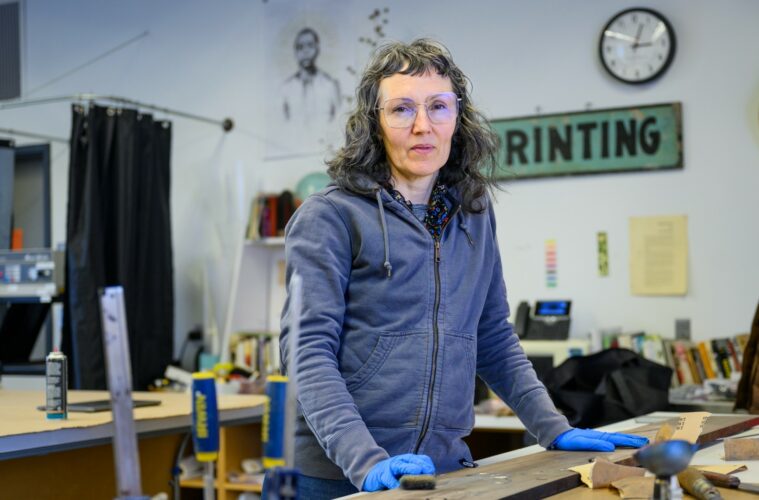Fences coming down and neighbors coming together. That’s the concept behind Associate Professor of Art Margaretha Haughwout’s living participatory art installation titled DE-FENCE.
The installation connects people with their community — and their environment — along the Sanctuary Eco-Art Trail in Troy, N.Y. The trail embeds art, culture, ecology, and history into a nature walk. It’s part of the NATURE Lab, coordinated by Kathy High ’77, which links local scientists and artists with an international network in the field of bio-arts.
The NATURE Lab and adjacent Eco-Art Trail are located in an impoverished neighborhood on 6th Street in Troy near the Hudson River. “There’s a long history of environmental racism [there],” says Haughwout. “So [NATURE Lab does] a lot of work in the community to try to reckon with that.”
Haughwout’s project began last summer with a drawing event during which participants discussed the neighborhood’s environmental health conditions, discovered medicinal plants growing in the marginal spaces and edges of the neighborhood, and sketched medicinal plants that have historically been used for the immune system. Examples include elderberry, which grows in hedgerows and is traditionally used for the flu; yarrow, which is found on the roadside and is for the cardiovascular system; and nettle seed, an edge plant that is used to induce a healthy response to external stressors.
DE-FENCE is “thinking about making the fence line its own space that can actually bring people together,” Haughwout says, “but also bringing about greater health, greater bodily defense, through collectivity.”
She took the sketches drawn by community members (with participants’ permission), digitally traced them, and etched them onto fence posts she filled with pewter. Participants drew their sketches in a nonlinear way, having multiple endpoints so that they could connect to other participants’ drawings.



Drawings by Troy, N.Y., community members inspired the design of the fence posts installed in Professor Margaretha Haughwout’s DE-FENCE. She traced the drawings using vector graphics, which were carved into kiln-fired walnut posts. Colgate carpenter Chris Naylor CNC (computer numerical control) routed the wood. Haughwout then filled the carvings with pewter, a process helped by studio safety technician Kevin Donlin. Photos by Mark DiOrio; bottom right photo by Sina Basila Hickey
This May, Haughwout is placing the first group of fence posts around the living installation — “not in a row, but this deconstructed fence feeling,” she says. During that community event, neighbors will plant medicinal plants alongside Haughwout, whose work typically involves a pedagogical element with site-specific teach-ins to talk about the context of the project.
Another phase of planting is planned for this fall or next spring. “It’s staggered because I want to see what’s doing well, what might need to be replaced, and work with the site instead of just dropping in, planting everything, and leaving,” Haughwout says.
She told Hudson Mohawk Magazine: “As individuals our health means nothing unless we’re thinking about our larger ecologies, our larger environment, as well as the health of one another.”
Haughwout’s father, Peter ’50, was a medical practitioner, which motivated Margaretha to learn about herbalism at an early age.

